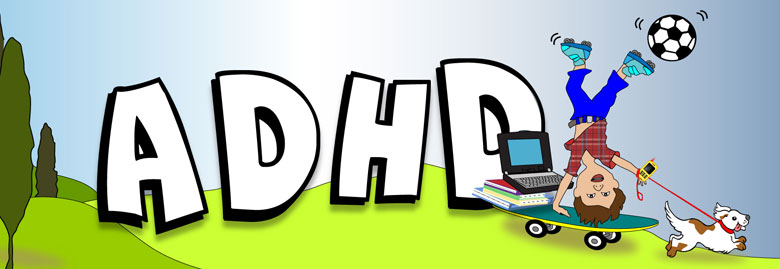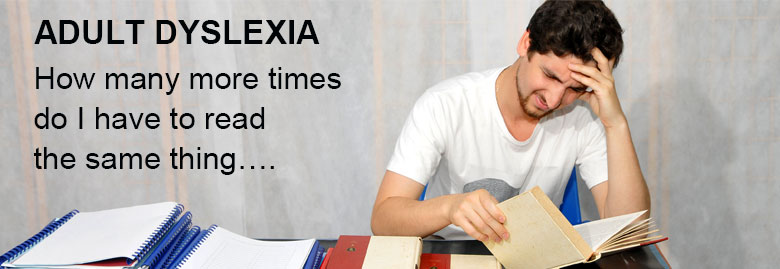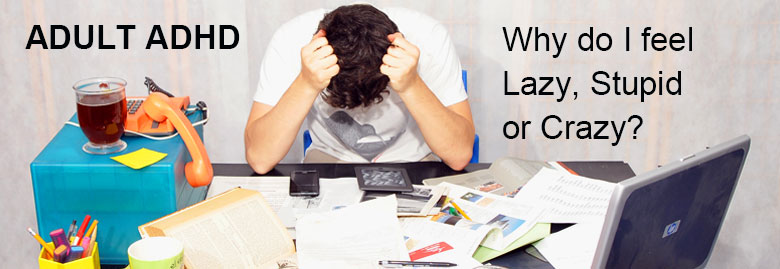Abigail Marshall is the author of the book The Everything Parent’s Guide To Children With Dyslexia
Davis Dyslexia Correction Davis Dyslexia Correction is a unique approach geared to the creative thinking strengths of individuals with Dyslexia. It combines specific techniques to resolve perceptual problems and attention focusing issues with a method for mastering sight words and improving reading fluency and comprehension that is geared to creative thinking strengths that accompany dyslexia. It is a two- stage program beginning with a one -week, intensive program of counseling and guidance that breaks down major learning barriers and often results in dramatic reading improvements. The second stage is practice and implementation of the Davis method at home, mostly through a systematic program of clay modeling, and generally takes between six and eighteen months to complete. Description of Program The Davis program was developed by an adult with severs dyslexia, Ron Davis, author of the book The Gift of Dyslexia. The program always begins with Orientation Counseling, a type of mental training that will help your child recognize and eliminate visual perceptual disorientations such as letter transpositions or the false sense that letters are moving on a page, as well as resolve auditory perceptual confusion. Your child will also learn specific strategies to regulate her energy level to improve balance and physical coordination. The Davis program also includes a set of strategies for reading. The primary strategy, Davis Symbol Mastery, is based on the idea that a child with dyslexia thinks primarily in pictures rather than words and needs to create mental pictures for words before he can read or understand words in print. While your child probably understands nouns such as “dog” or “lion,” he may stumble over words like “for” or “in” because he has nuclear mental image to go along with the word. The focus of the Davis program is to help the child supply his own picture for each word. Fact The Davis method was developed in 1981 and were used in a clinical setting with more than 1000 students before a program of professional training was created in 1995. Because the reading techniques can be easily transferred to different languages, the program has grown rapidly and by 2004 was offered in 29 countries and 19 different languages. The primary tools of the Davis program are a dictionary and clay. Your child learns how to look up words, how to use the pronunciation key to find out how each word sounds, and how to use the definition and example sentences as a starting point for mastering the meaning of the word. Your child will then use clay to form the letters of each word and also makes a three-dimensional, model to depict the word’s meaning. The child will model small, abstract words such as the or and, and may also use this approach to understand larger words or concepts such as sequence or time. Reading practice also includes a technique called Spell Reading, which builds visual tracking, sequencing, and whole word recognition skills, and Picture-at-Punctuation, an approach using visualization to build comprehension skills. Program Outcomes The Davis program is geared toward children aged eight and over and often produces very rapid reading gains, especially with older children. It is common for word recognition and reading fluency skills to jump by three to five grade levels during the initial week with children or teenagers aged nine and over. However, the Davis techniques must be practiced after the program in order for progress to continue and initial gains to be sustained; thus, the program requires that you and your child be ready to follow a recommended schedule of reading practice and continue with the clay modeling until a word list of almost 220 words is fully mastered. Davis providers can work with almost any child who has symptoms of dyslexia, but the program is particularly appropriate for children who have difficulty gaining reading fluency, who have difficulties with letter reversals and transpositions, or who tend to stumble over all omit small words when reading. It is also an excellent choice for multilingual children, as the method can readily be transferred from one language to another. Often, children who have been labeled as unteachable with phonics-based reading tutoring are the ones who report the most dramatic gains with the Davis methods. Students who complete the Davis program often become very capable and enthusiastic readers, often gaining proficiency at all above grade level. This may be partly attributable to the fact that the program is aimed at higher-order reading skills rather than At early-stage decoding strategies. However, because the program de-emphasizes phonics, it remains controversial among many educators who prefer traditional teaching. Also a Davis provider will screen carefully to evaluate your child’s learning profile and level of maturity and motivation. Because the program emphasizes mental strategies for self-awareness and control, it is not recommended for children using medication such as Ritalin to regulate attention level or behavior. Fact The Davis Math Mastery program takes five full days (in some cases up to eight days) of one-on-one work with a trained facilitator to complete. Like the corresponding dyslexia program, your child will need to do follow-up work at home, continuing to use clay to model words that represent math concepts or cause confusion when used in word problems. The specific techniques used are also explained in the book The Gift Of Learning by Ron Davis. The Davis Math Mastery program applies clay-modeling techniques to help your child master foundation concepts underlying mathematical relationships such a change, cause-effect, before/after, consequence, time, sequence, and order/disorder. Clay modeling is also used to master the meaning of words commonly used in math story problems that are somewhat different than everyday use. For example, the word “by” is generally used to mean “close to.” But in word problems, it’s sometimes used to mean two separate things: for multiplication, to mean, “using as a multiplier,” and for division the meaning would be ”into groups of.” A Davis facilitator then guides your child through a series of twelve participatory mathematical exercises to move rapidly from counting to multiplication, to understanding fractions, to developing proficiency with pencil-and –paper math. The exercises can be done quickly because the focus is on helping your child understand the concepts underlying each mathematical function; for example, using exercises counting forward and backwards in multiples to lead into the concept of multiplication. Fact Forty percent of children have difficulty learning to read. 15-20% in every classroom. More than 90% of these children can learn to read at average levels when taught with appropriate programs in the primary grades. The key to successful intervention is to provide support to primary-grade students before they fall behind. Davis Learning Strategies Davis Learning Strategies is an innovative program, aimed at all learners, which implements methods geared to visual and kinesthetic learners in primary level classrooms. The program is designed to supplement a school’s existing reading program by teaching attention-focusing and self-awareness techniques and uses clay modeling to learn alphabet letter and basic sight words. It functions both as an intervention program for at-risk learners and as an enrichment program that builds on the creative learning process for able students. In pilot classrooms, where the program was implemented in grades K-3, the need for special education referrals was eliminated, and there was a significant increase in the number of children who qualified for gifted education placement. Teachers reported the program easy to implement and found that self-regulation skills taught reduced destructive behavior in the classroom and enhanced the ability of all children to focus on class work. Click to listen highlighted text! Abigail Marshall is the author of the book The Everything Parent’s Guide To Children With Dyslexia Davis Dyslexia Correction Davis Dyslexia Correction is a unique approach geared to the creative thinking strengths of individuals with Dyslexia. It combines specific techniques to resolve perceptual problems and attention focusing issues with a method for mastering sight words and improving reading fluency and comprehension that is geared to creative thinking strengths that accompany dyslexia. It is a two- stage program beginning with a one -week, intensive program of counseling and guidance that breaks down major learning barriers and often results in dramatic reading improvements. The second stage is practice and implementation of the Davis method at home, mostly through a systematic program of clay modeling, and generally takes between six and eighteen months to complete. Description of Program The Davis program was developed by an adult with severs dyslexia, Ron Davis, author of the book The Gift of Dyslexia. The program always begins with Orientation Counseling, a type of mental training that will help your child recognize and eliminate visual perceptual disorientations such as letter transpositions or the false sense that letters are moving on a page, as well as resolve auditory perceptual confusion. Your child will also learn specific strategies to regulate her energy level to improve balance and physical coordination. The Davis program also includes a set of strategies for reading. The primary strategy, Davis Symbol Mastery, is based on the idea that a child with dyslexia thinks primarily in pictures rather than words and needs to create mental pictures for words before he can read or understand words in print. While your child probably understands nouns such as “dog” or “lion,” he may stumble over words like “for” or “in” because he has nuclear mental image to go along with the word. The focus of the Davis program is to help the child supply his own picture for each word. Fact The Davis method was developed in 1981 and were used in a clinical setting with more than 1000 students before a program of professional training was created in 1995. Because the reading techniques can be easily transferred to different languages, the program has grown rapidly and by 2004 was offered in 29 countries and 19 different languages. The primary tools of the Davis program are a dictionary and clay. Your child learns how to look up words, how to use the pronunciation key to find out how each word sounds, and how to use the definition and example sentences as a starting point for mastering the meaning of the word. Your child will then use clay to form the letters of each word and also makes a three-dimensional, model to depict the word’s meaning. The child will model small, abstract words such as the or and, and may also use this approach to understand larger words or concepts such as sequence or time. Reading practice also includes a technique called Spell Reading, which builds visual tracking, sequencing, and whole word recognition skills, and Picture-at-Punctuation, an approach using visualization to build comprehension skills. Program Outcomes The Davis program is geared toward children aged eight and over and often produces very rapid reading gains, especially with older children. It is common for word recognition and reading fluency skills to jump by three to five grade levels during the initial week with children or teenagers aged nine and over. However, the Davis techniques must be practiced after the program in order for progress to continue and initial gains to be sustained; thus, the program requires that you and your child be ready to follow a recommended schedule of reading practice and continue with the clay modeling until a word list of almost 220 words is fully mastered. Davis providers can work with almost any child who has symptoms of dyslexia, but the program is particularly appropriate for children who have difficulty gaining reading fluency, who have difficulties with letter reversals and transpositions, or who tend to stumble over all omit small words when reading. It is also an excellent choice for multilingual children, as the method can readily be transferred from one language to another. Often, children who have been labeled as unteachable with phonics-based reading tutoring are the ones who report the most dramatic gains with the Davis methods. Students who complete the Davis program often become very capable and enthusiastic readers, often gaining proficiency at all above grade level. This may be partly attributable to the fact that the program is aimed at higher-order reading skills rather than At early-stage decoding strategies. However, because the program de-emphasizes phonics, it remains controversial among many educators who prefer traditional teaching. Also a Davis provider will screen carefully to evaluate your child’s learning profile and level of maturity and motivation. Because the program emphasizes mental strategies for self-awareness and control, it is not recommended for children using medication such as Ritalin to regulate attention level or behavior. Fact The Davis Math Mastery program takes five full days (in some cases up to eight days) of one-on-one work with a trained facilitator to complete. Like the corresponding dyslexia program, your child will need to do follow-up work at home, continuing to use clay to model words that represent math concepts or cause confusion when used in word problems. The specific techniques used are also explained in the book The Gift Of Learning by Ron Davis. The Davis Math Mastery program applies clay-modeling techniques to help your child master foundation concepts underlying mathematical relationships such a change, cause-effect, before/after, consequence, time, sequence, and order/disorder. Clay modeling is also used to master the meaning of words commonly used in math story problems that are somewhat different than everyday use. For example, the word “by” is generally used to mean “close to.” But in word problems, it’s sometimes used to mean two separate things: for multiplication, to mean, “using as a multiplier,” and for division the meaning would be ”into groups of.” A Davis facilitator then guides your child through a series of twelve participatory mathematical exercises to move rapidly from counting to multiplication, to understanding fractions, to developing proficiency with pencil-and –paper math. The exercises can be done quickly because the focus is on helping your child understand the concepts underlying each mathematical function; for example, using exercises counting forward and backwards in multiples to lead into the concept of multiplication. Fact Forty percent of children have difficulty learning to read. 15-20% in every classroom. More than 90% of these children can learn to read at average levels when taught with appropriate programs in the primary grades. The key to successful intervention is to provide support to primary-grade students before they fall behind. Davis Learning Strategies Davis Learning Strategies is an innovative program, aimed at all learners, which implements methods geared to visual and kinesthetic learners in primary level classrooms. The program is designed to supplement a school’s existing reading program by teaching attention-focusing and self-awareness techniques and uses clay modeling to learn alphabet letter and basic sight words. It functions both as an intervention program for at-risk learners and as an enrichment program that builds on the creative learning process for able students. In pilot classrooms, where the program was implemented in grades K-3, the need for special education referrals was eliminated, and there was a significant increase in the number of children who qualified for gifted education placement. Teachers reported the program easy to implement and found that self-regulation skills taught reduced destructive behavior in the classroom and enhanced the ability of all children to focus on class work. Powered By GSpeech






